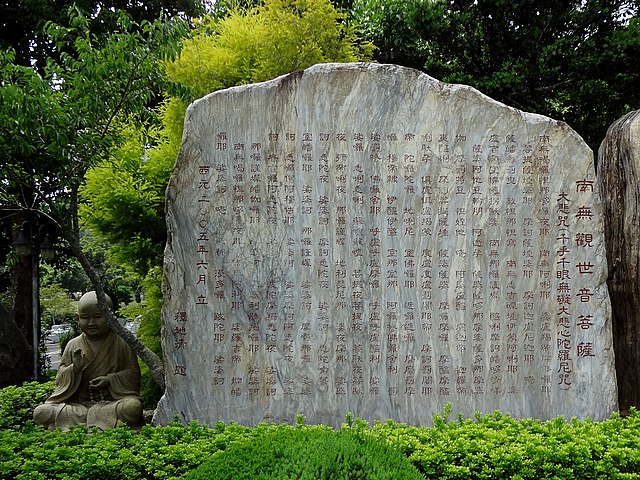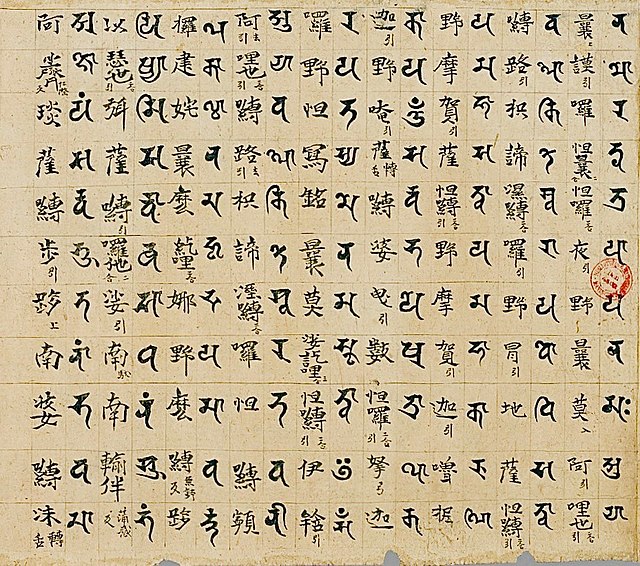A dharani pillar, sutra pillar, or jingchuang is a type of stone pillar engraved with dhāraṇī-sūtras or simple dhāraṇī incantations that is found in China. Dharani pillars were usually erected outside Buddhist temples, and became popular during the Tang dynasty (618–907).
Ming dynasty octagonal dharani pillar, engraved with the Dharani of the Victorious Buddha-Crown, originally standing at the Temple of Azure Clouds (碧雲寺) in Beijing.
Tangut dharani pillars erected in 1502, now at the Ancient Lotus Pond (古蓮花池) in Baoding.
The Nīlakaṇṭha Dhāraṇī engraved on a stele.Temple Fo Ding Shan Chao Sheng in Sanyi Township, Taiwan. Erected in June 2005.
Dharanis, also known as Parittas, are Buddhist chants, mnemonic codes, incantations, or recitations, usually the mantras consisting of Sanskrit or Pali phrases. Believed to be protective and with powers to generate merit for the Buddhist devotee, they constitute a major part of historic Buddhist literature. Many of these chants are in Sanskrit and Pali, written in scripts such as Siddhaṃ as well as transliterated into Chinese, Korean, Japanese, Vietnamese, Sinhala, Thai and other regional scripts. They are similar to and reflect a continuity of the Vedic chants and mantras.
11th-century Buddhist Pancaraksa manuscript in Pāla script. It is a dharani genre text on spells, benefits and goddess rituals.
Indian Siddham script to Chinese script transliteration code in Nilaṇṭhanāmahṛdaya dhāraṇī.
Image: Liao 1085 dharani pillar
Image: Incantation to the Blue throated Avalokitesvara (Nīlakaṇṭha Dhāraṇī)







